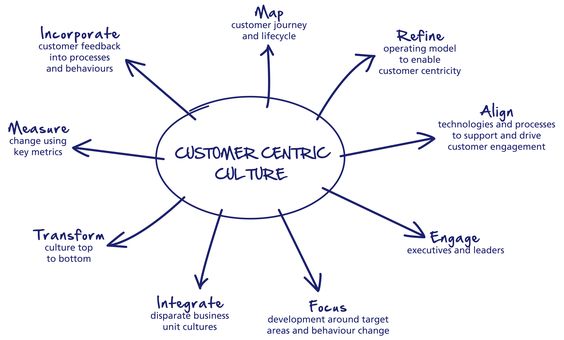Customer-Centric Approach
What is a Customer-Centric Approach?
Definition:
A “Customer-Centric Approach” is a business strategy that prioritizes the needs, preferences, and overall experience of customers in every aspect of the organization. It involves aligning products, services, and processes with customer expectations, gathering insights to enhance offerings, and fostering strong customer relationships. A customer-centric approach recognizes the central role of customers in business success and aims to create value by delivering exceptional experiences.
Analogy:
Think of a Customer-Centric Approach as hosting a personalized dinner party. Just as a host considers the preferences and comfort of guests, businesses adopting a customer-centric approach tailor their products and services to meet customer expectations, ensuring a positive and personalized experience.
Further Description:
A customer-centric approach requires a shift in mindset, focusing on understanding and empathizing with customers. It involves using data and feedback to continuously refine offerings, providing excellent customer service, and creating a seamless and enjoyable customer journey. By putting the customer at the center of decision-making, businesses can build loyalty, drive customer satisfaction, and differentiate themselves in the market.
Key Components of a Customer-Centric Approach:
- Customer Understanding: Thoroughly understanding customer needs, behaviors, and preferences through data analysis, surveys, and feedback.
- Personalization: Tailoring products, services, and interactions to individual customer preferences to create a personalized experience.
- Exceptional Customer Service: Providing prompt, helpful, and personalized customer support to address inquiries, issues, or concerns.
- Feedback Loops: Establishing mechanisms for collecting and acting upon customer feedback to continuously improve products and services.
- Cross-Channel Consistency: Ensuring a consistent and seamless experience for customers across various touchpoints, both online and offline.
Why is a Customer-Centric Approach Important?
- Customer Loyalty: Prioritizing customer needs builds trust and fosters loyalty, reducing customer churn.
- Competitive Advantage: Businesses that consistently deliver excellent customer experiences differentiate themselves in the market.
- Repeat Business: Satisfied customers are more likely to make repeat purchases and recommend the brand to others.
- Adaptability: A customer-centric approach allows businesses to adapt quickly to changing customer expectations and market trends.
Examples and Usage:
- E-commerce Personalization: Online retailers use customer data to recommend products, create personalized shopping experiences, and offer tailored promotions.
- Customer Service Excellence: Companies known for exceptional customer service, such as Zappos or Amazon, prioritize resolving customer issues promptly and courteously.
- Customized Marketing Campaigns: Businesses create targeted and personalized marketing campaigns based on customer segments and preferences.
In summary, a Customer-Centric Approach involves prioritizing customer needs and experiences in every aspect of the business, leading to increased loyalty, competitive advantage, and overall business success.
Key Takeaways:
- A Customer-Centric Approach prioritizes customer needs and experiences in all aspects of the business.
- Key components include customer understanding, personalization, exceptional customer service, feedback loops, and cross-channel consistency.
- It builds customer loyalty, provides a competitive advantage, and encourages repeat business.
- Examples include e-commerce personalization, customer service excellence, and customized marketing campaigns.
Table of Contents





